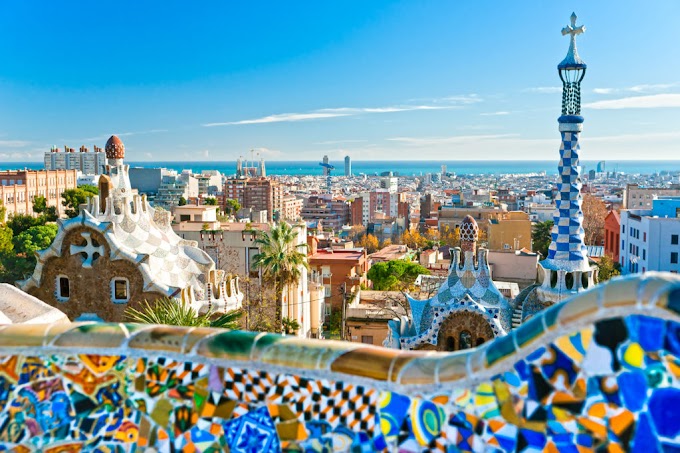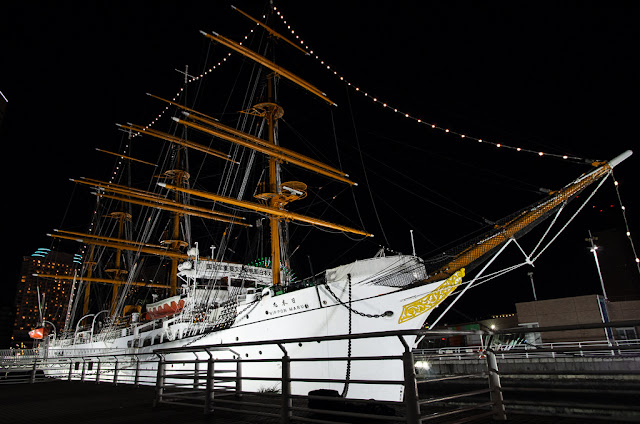
Today we are going to Yokohama. It is a large and very important city for understanding Japan with an extraordinary history. To better understand what Yokohama is, a little historical excursion is required.
A Brief History of Japanese Isolation
Everyone knows that Japan has been closed to foreigners for most of its more or less modern history. For this phenomenon, the Japanese even came up with a special word - sakoku , literally "country on a chain." The shoguns of the Tokugawa dynasty decided to put their country on a chain for two reasons.
First, the Spanish and Portuguese traders who landed on the Japanese islands in the 16th century actively spread Christianity. Well, something, but the spread of Christianity between the Spaniards and the Portuguese is going well, as we see from the history of Malaysia, the Philippines and their otherthemAsian colonies. And the irresponsible Japanese feudal lords of some islands, for example Kyushu, not only accepted the Jesuits with open arms, but themselves massively and voluntarily converted to the new faith. The Europeans, on the other hand, took part in internecine conflicts between feudal lords, which made the colonization of the entire country a very likely scenario.
Second, active trade with Europeans led to the emergence of a new class of wealthy merchants in Japanese society, whose wealth and influence rapidly increased. The ghost of a bourgeois revolution loomed before the shogunate.
To combat these two tendencies at the very beginning of the 17th century, the shogun decided to take such a radical step. The "foreign religion" and the import of foreign books were completely banned, several missionaries were executed for prevention. The rest of the foreigners were expelled from the country, and the Japanese were forbidden to travel abroad and build large sea ships. The Dutch and Chinese traders were still allowed to enter the port of Nagasaki so that trade would not fade away at all, but only twice a year. Plus, all foreign trade was monopolized by the state.
Sakoku's policy lasted until 1853, when the United States equipped Commodore Perry's famous expedition. The Americans were interested in the Japanese islands as an intermediate naval base in the Pacific Ocean. After frightening the backward Japanese with a squadron of warships, Perry forced them to open their ports to the Western world. As a result, in 1858, construction began on the largest commercial port of Yokohama in Kanagawa Prefecture south of Tokyo.
***
Those who have read all this historical blizzard are entitled to three Japanese life hacks:
- How to travel in Japan without luggage?
- How to travel in Japan with luggage?
- How to save on expensive shinkansens?
Life hack 1: How to travel in Japan without luggage?
In Japan, as you already understood, everything is for people. Japanese people love to travel, but doing so with large and heavy luggage is usually inconvenient. Therefore, the Japanese have come up with a system that allows you to travel separately from large and heavy luggage. In essence, this is forwarding or courier delivery.
It works like this: you hand over your suitcase at the reception at the hotel, at the counter at the airport, in almost any combo or at the office of a transport company, and after a few hours or at most a day you pick it up at the next hotel, combo, office or airport. The most famous transport company in Japan is Kuroneko. Her trucks and couriers with two cats on their side scurry around the country.
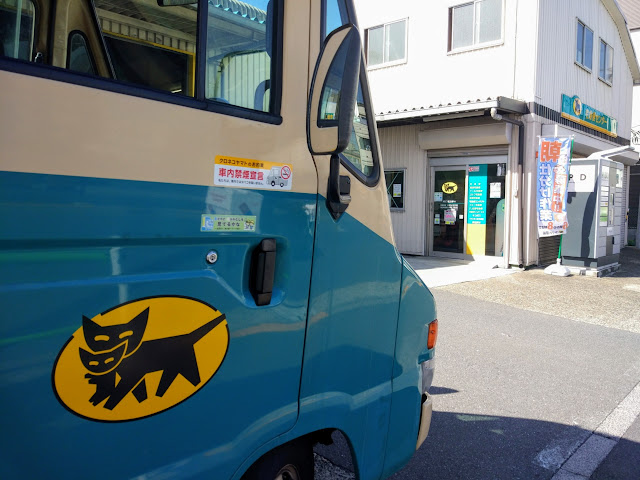
Sooo convenient and not very expensive. We packed two backpacks into one and sent this 20-kilogram monster from Tokyo to Nara for 1,700 yen (900 rubles). They would have spent more on lockers.
Life hack 2: How to travel in Japan with luggage?
Lockers - "baggage life hack" number 2. Last year in Seoul, we were glad to have automatic lockers everywhere. It turned out that this is actually a Japanese chip. Lockers come in different sizes and are located at every metro station, railway station, at some attractions and in other places where people gather. They usually cost from 200 to 700 yen for 1 door close. You can pay with a transport card or coins.
Accordingly, if you are still rushing somewhere with your luggage, and on the way you wanted to get rid of it at least temporarily, you can always leave it in the locker.

Life hack 3: How to save on expensive shinkansens?
Shinkansen is the most expensive transport in Japan, 1 hour of travel at a speed of 300 km / h costs an average of $ 100. If you are going to ride in Japan intensively, it makes sense to buy a travel pass - JR Pass. For 7/14/21 days, it costs $ 270/420/540, respectively. However, on our way there was only one long stretch and there was no point in buying a JR Pass.
So what to do if it is expensive to travel on the Shinkansen, but it takes a long time on a regular train, and even with some crooked transfers? Here a good old bus comes to our aid. Yes, there is also a well-developed network of intercity bus routes in railroad Japan. They are transported by private companies, buses and train stations are extremely clean and punctual (hello, Flixbus!), The Japanese can't have it any other way.
Another plus of buses is that they are simple and straightforward. No need to rush around the cyclopean railway station in search of your train; then doubt whether you got into the right carriage and in the wrong direction, and then also get nervous whether the train will stop at your station and where it is at all. With the bus, everything is simple: he has one route, the bus is also one, he does not have much stops along the way and he will bring you exactly where you need to. As a last resort, the "steward" will kick out.
Well, and one more advantage - bus stations and stations are usually located in the city center, and shinkansen stations, like airports, are at settlements, and you still need to get there separately.
So, how much did we manage to save. Shinkansen from Yokohama to Nagoya costs from $ 100 for a ticket without a reserved seat, and a bus - from $ 30. Plus half a toss, you can count, you saved on a lodging, tk. rode at night. Yes, this is 6 hours of driving instead of 1.5, and not a very comfortable night crossing, but I didn't get my hand to pay 200+ bucks for 1.5 hours on the "train".
The most understandable bus operator for foreigners is Willer Express. They have a normal English-language website and accept non-Japanese card payments.
This is how the interior of their bus looks so cute.
Okay, back to our Yokohama.
The current Yokohama is officially the second largest city in Japan, and in fact - part of the "Greater Tokyo". It takes an hour on a regular train, and 30 minutes on a high-speed train. All this time, rather dull residential areas of two-story mansion'ov stretch past, interspersed with more cheerful private houses with neat vegetable gardens. Trains to Yokohama run from everywhere: from Tokyo station, and from Nippori, and from Shibui. We traveled with Nippori on the Keihin-Tohoku line.
Yokohama became the gateway to Japan not only for the Western world, but also for the Chinese. The local Chinatown is the largest and most vibrant in all of Japan. So historical Yokohama consists of two parts: European-American and Chinese.
To explore all this on foot, the most convenient way is to get to Ishikawacho station, go into the hilly "European" area and then move to the northwest, so that in the evening, after dinner in Chinatown, approach the already beautifully illuminated Minato Mirai skyscraper quarter.
Yokohama European Quarter and Cemetery
If the Chinese preferred to settle in the center of Yokohama near the port, the Europeans have chosen for their residences hilly outskirts of the city - the area of Yamato (Yamate area,山手). Here traders and diplomats unfolded on a grand scale unthinkable for the Japanese: huge plots, spacious villas, parks, gardens and other excesses. All this is so unusual even for modern Japanese that the surviving villas have been turned into museums a little cardboard in our opinion. People come for a day out from Tokyo and take a selfie against the backdrop of former luxury.

True, not all mansions managed to survive the Great Kanto Earthquake in 1923. There are literally a couple dozen left.

The European expats have chosen a place for their life, according to our gaijin understanding, a good one. The hills offer views of downtown Yokohama:

And from the backyard, through a hole in the fence, you can even see Fuji. Although she stands in direct line of sight from the Yokohama hills, we did not find a single observation deck or balcony facing her. All are facing in the opposite direction, towards the sea.
Well, we'll go there, towards the Foreign Cemetery.

The beginning of the Foreigner cemetery in Yokohama was laid by the same Comodore Perry, who buried one of his sailors at the top of the hill. Then a couple of Russian sailors joined him, and since then it has become the custom. The hill was officially designated a gaijin cemetery and now contains over 4,000 graves.
You can enter the cemetery from 12:00 to 16:00 on weekends and holidays, but you can see everything from the outside.
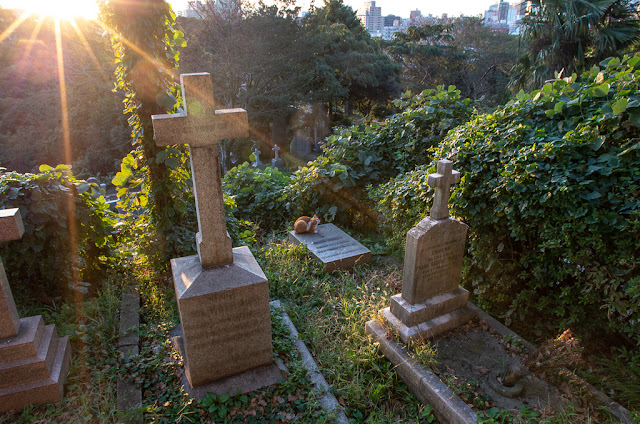
Harbor View Park starts just across the street from the cemetery. On it you can walk along the sea towards Chinatown and gaze at the port of Yokohama. Here the Japanese also piled up all sorts of islands and peninsulas, so that the sea is no longer really visible.

It’s almost dark, and we’re not having dinner yet. Urgently to Chinatown.
Chinatown Yokogama

Chinatown in Yokohama is very lively and authentic, but very slick in Japanese style. The local Chinese realized that they have long become a separate tourist attraction for the Japanese majority, and they diligently correspond to their status.
Looking for exotic Chinese food?

Get it!

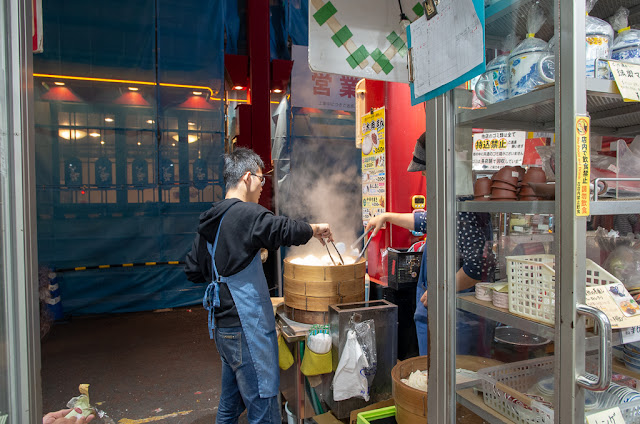
Would you like miraculous berries, mushrooms and roots? You are welcome!
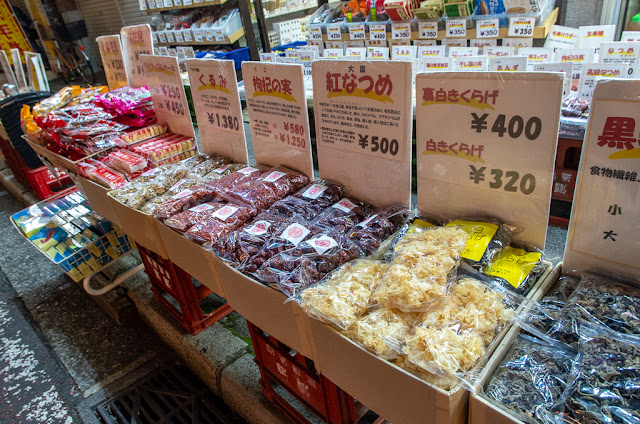
Reflexology? Massage? Divination? Everything is!

Judging by the temples, the local Chinese community is doing well.
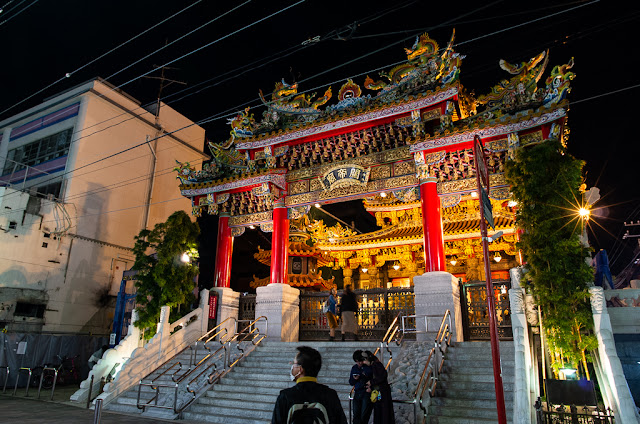
Judging by the queues at some restaurants, they are also doing well.

In Japan, you can often find a "tail" wrapping around a corner in a restaurant or even some kind of filthy street stall. At an even higher level of fast food, as in Europe, they work with a long break for lunch or in general only in the evening, and disciplined people are pulling up to the opening. But for some reason this does not cause such irritation among me as in Europe.
For dumplings, too, I had to work hard.

For dessert, Portuguese cultural heritage is offered everywhere. Although no one in Asia knows that it is Portuguese, the Hong Kongers have appropriated the pastels.

After examining all the nooks and crannies of Chinatown, we taxi back to the embankment, to the Yamashita park. A hundred-year-old Pacific liner Hikawa Maru is moored here, which once sailed from Yokohama to Seattle. In total, he (she, more precisely) swam across the Pacific Ocean and back 240 times.

A little further north in the sea hangs a new Yokohama cruise ship terminal and an excellent promenade, Osanbashi Pier.
Unfortunately, he did not have any liners during our walk, only a Japanese ferry from distant islands chartered.

From the pier you can see the whole of Minato Mirai in all its glory, as well as the "red brick warehouses" (as they are called - Yokohama Red Brick Warehouse). Previously, it housed customs, now some kind of art space.

Minato Mirai
Well, we finally reached Minato Mirai. This is a type of super-modern city block with a 300-meter Landmark Tower in the center. In fact, everything "super-modern" in Japan gives off the film "Back to the Future". It can be seen that all this was super-modern 20 years ago. Well, or simply the style of the Japanese is like this - everywhere one can feel nostalgia for the warm tube 60-80s, when the country was on the rise.
In the middle of the block there is a Ferris wheel, surrounded by some kind of cardboard amusement town. Do not be afraid, you need to go a little further.

There, under the shadow of the same skyscrapers, in an artificial canal, there is the famous sailing barque Nippon Maru. This is a training ship, during its life it made 46 (!) Voyages around the world. Very beautiful and inspiring, after all, sailing ships are the perfect embodiment of the very idea of distant wanderings.
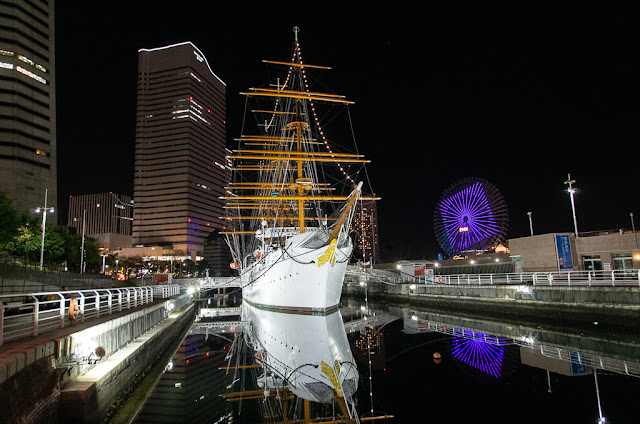
Well, it's time for us to go to the bus station. It is located in the very heart of Yokohama's business district, on the first level of the Nissan headquarters skyscraper.
Through the showcase, you can see what they invented new in Nissan.

For those who are tired of Japanese cars, there is also a Tesla showroom. True, wealthy Japanese prefer German cars.

Summary Yokohama is a very enjoyable and fun option for a day trip from Tokyo. The city is indeed closer to the European heart than the Japanese capital, here I am in solidarity with the European "invaders". If I had a chance to stay longer in the Tokyo area, I would consider staying here. There is a sea in Yokohama, which in Tokyo has not been visible for a long time behind the filled islands. There are green hills and at least some relief, which is clearly lacking in even-gray-square Tokyo. There is cultural and ethnic diversity here. In general, freedom breathes a little from the distant seas.



